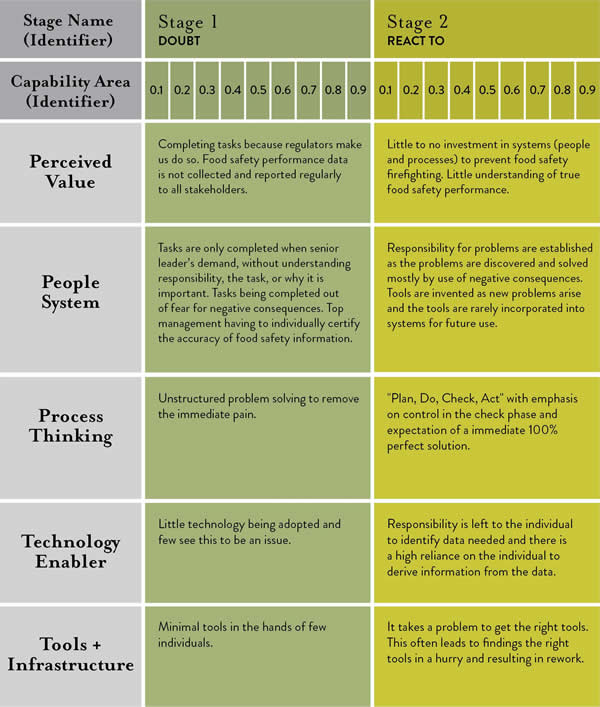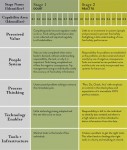What’s new for BRC this year?
2014 has been an extremely busy year for BRC. We wanted to think of BRC standard as not just an audit or a standard for certification. We want to strengthen food safety and help grow respect for food safety around the world. So in that spirit, we have strengthened our program.
One of the new changes is auditor competency programs. Under this, auditors need to understand the standard, know the audit technique, have a strong grasp of the industry they are in, whether it be dairy or thermal processing etc. They need to truly understand the processes involved, and where the risks are. While there have been some challenges with the auditor competency program, we have identified some auditors that are clearly strong. We are also addressing the gaps.
With the horse meat scandal, we realized that there are some times gaps and barriers with distributors and agents. So we have developed a standard for brokers and distributors to strengthen the supplier approval program. This year, we have also worked on BRC Issue 6, and developed best practices from our experiences. The standard has been growing in the U.S., Canada, Mexico, and Italy, and we are also expanding into new areas both geographically and industry sectors such as packaging, storage and distribution etc.
One major development in 2014 was growth in unannounced audit, in response to customer requests. Customers came to us and asked us for that option that if they really feel ready for unannounced audits, they should do it. BRC currently has over a 1000 sites that are getting audited unannounced. And while it hasn’t been simple or straightforward, this is great progress.
Where’s BRC going in 2015 and beyond?
2015 is going to be a big game changer for us. In January, BRC Issue 7 will be launched, and for the first time, you can download the entire standard from the BRC website free of charge. Audits using the new Issue 7 will begin July 1. It’s a nice clean standard with a handful of changes, and cleaned up from Issue 6. Things we have added are food fraud, based on industry demand, given what happened with horse meat, olive oil, rice etc. BRC auditors are not forensic auditors or food fraud investigators. They will, however, focus on food defense programs, to confirm that you have control mechanisms in place to prevent fraud.
The revised standard will also included Expanded High Care, in which we have identified certain products with certain characteristics for greater scrutiny, for instance RTE products susceptible to pathogen growth. You need to make sure there’s no process to reintroduce the pathogens in the final product. This change has been a huge shift for some industries. While all standards cover the basic GFSI requirements, we have noticed that when it comes to RTE products, BRC is much more rigorous.
Another focus area will be prevent labeling errors to avoid recall. Often, the number one or two cause for recall is mislabeling, where the product inside the packaging is not accurately specified on the label. Often this is around allergen control, but if it’s in the package, it has to be on the label, and this is a big focus for the new version.
We are also expanding our BRC Global markets program to align better with the GFSI global markets program. In this we have roughly split the standard into three schemes – beginning, intermediate and full certification. If companies don’t have the ability, knowledge, or processes in place to get fully certified, it’s a systemic approach to work themselves forward. It’s one thing to get the standard and set the bar, but another process to prepare these companies for certification. So it’s very exciting program to work with real small sites, in developing areas of the world, where the food industry is still growing.
How will companies be affected by these changes? And why is embracing these changes important?
Management commitment is always important. We have done a lot of audits: Over the world, we have over 17,000 sites that are BRC certified on the food side alone. Ones that have done best are those that have embraced food safety culture as an organization. It’s really about how as an organization, you take something on. The companies that have always struggled are those that say, ‘it’s the QA manager’s job, and let them take care of it.’ BRC is trying to see how to improve, engage and then measure the culture of an organization especially when it comes to food safety. And this starts with training and the commitment to training. Sites should increase and improve their training, and focus on continually evolving and getting better with their food safety, food quality and regulatory compliance programs.
It’s important to embrace these changes, because we need to move forward to continue to reduce risks. Knowing our suppliers is a big part of that, and the new standards enable enhanced supplier approval, and controls, and transfer of information. In BRC Issue 7, supplier controls will be a critical focus area.
We also do have to get the internal house in order, so we need to have strong internal controls in place, and quality internal audits. Companies need to understand how to do these internal audits very well, and have process controls and, verification and validation programs in place. People understand the importance of food safety. But they don’t often use all the tools they have in their tool box as well as they can. We can use internal audits, root cause analysis, risk assessment, etc. more effectively to get more insights in our internal FSQA progams.
Overall, we should enhance food safety. The bar should be constantly raise. We can never be in a position where we say it’s safe and good enough, and we don’t have to do any more. We constantly have to move forward to meet expectations of consumers and customers. We need to follow continuous improvement, and get our partners involved, whether they are raw material suppliers, packaging providers, or distributors. What do they need to do, and how do we expect them to be our partners? We are certified, that’s great, but how can we transfer that along the supply chain? All these questions need to be continually addressed.
Listen to John Kukoly address more questions on how BRC can help you better prepare for FSMA and take on questions for the participants. Click here to access the webinar.









 The focus of the series is how technology can help FSQA teams execute to meet today’s biggest food safety and quality challenges in program management, compliance, continuous improvement, risk mitigation and much more.
The focus of the series is how technology can help FSQA teams execute to meet today’s biggest food safety and quality challenges in program management, compliance, continuous improvement, risk mitigation and much more.





